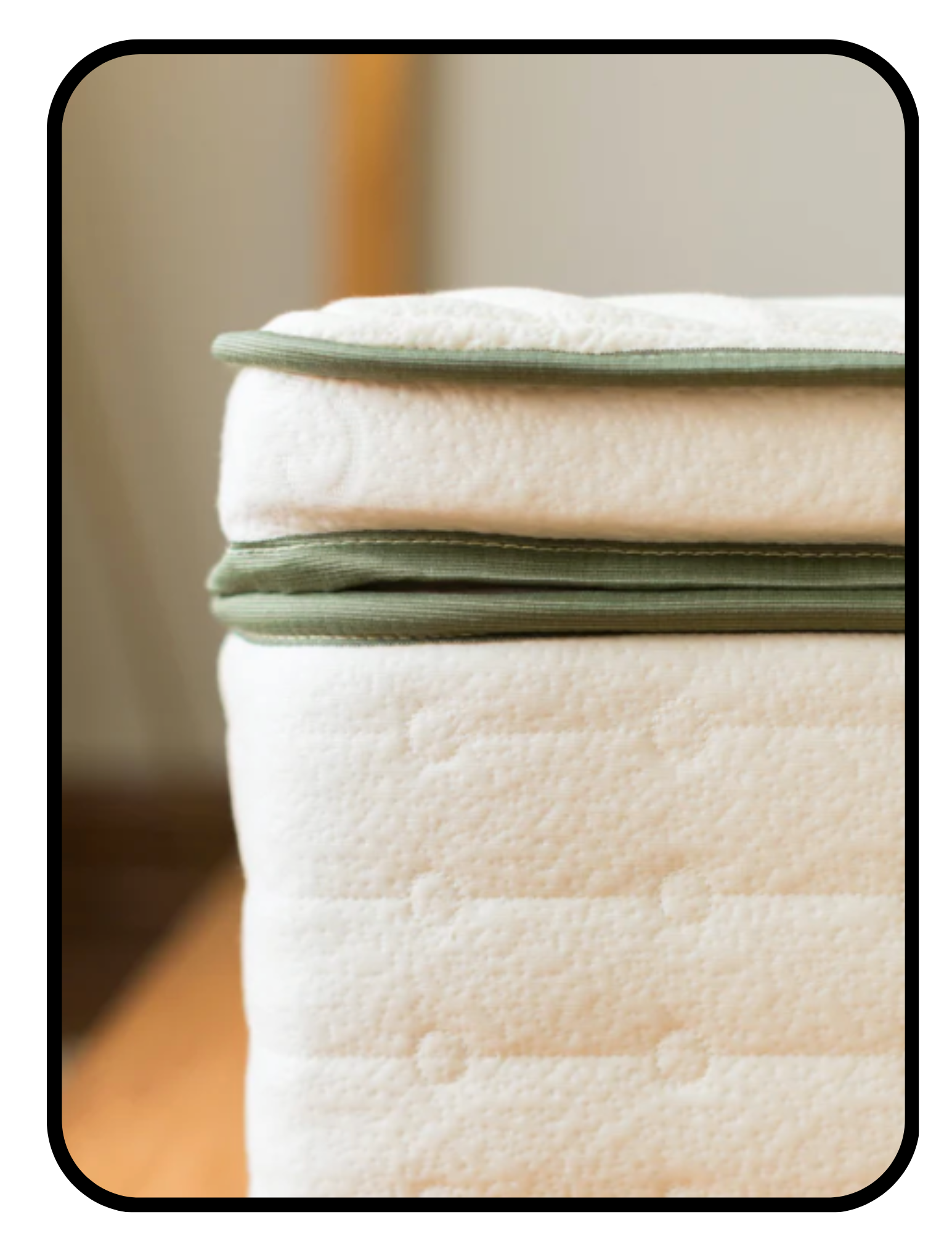Shop Whole Home ➜ Interior Finishes ➜ Wall Paint
Non Toxic Paint
Mineral-based, plant-based, and less toxic acrylic paints for your interior walls. Click the symbols below each paint for more information about it’s potential impact on your health.
Auro makes paints with just 5 natural ingredients. They offer regular, anti-mold, and air-purifying paints. Importantly, the high pH of the paint is what makes it anti-mold, rather than the inclusion of any synthetic fungicides or antimicrobials.
These acrylic paints are APE, PFAS, and VOC free. They are highly transparent about their ingredients, with HPD, Declare, and SDS sheets easily available. They stated in an email they don’t use PFAS. They color-match to any color offered by standard paint manufacturers, and offer EMF-blocking, air-purifying, and chalkboard paints. I’ve used this in my home, and love it.
This 100% acrylic paint has GreenSeal-11 certification, which has long prohibited many PFAS and will expand that to include all PFAS starting in 2025. Eco Spec is Red List Free and has a Declare label published with all ingredients down to 100ppm, without PFAS, though this does mean there could be below 100ppm (0.01%) PFAS in the mixture. They are planning to release a verified 0% PFAS version in 2025. Still a much better option than standard and good if you prefer buying paint at the hardware store instead of online.
More About Non-Toxic Paint
Why is it so hard to find non-toxic paint?
Completely, 100%, natural interior wall paints are quite rare. Even the majority of the healthiest brands will still have a small amount of petroleum-based polymer incorporated into them. This helps bind the pigments with the rest of the ingredients, and provides the shine or texture you see in a dried coat of paint. Historically, many paint binders were made of animal proteins like collagen, egg whites, milk casein, or beeswax. Plant gums, resins, waxes, and cellulose have also been used. Polymers are largely favored today for their higher stability and durability, less reliance on plant and animal matter, and lower cost, which can be important when using paint in the larger volumes required for interior walls.
Why is Zero VOC paint not the healthiest?
Many of the ingredients added to paint don’t release VOCs, but are hazardous to health. This includes things that are absorbed via touch, like APEs, PFAS, and endocrine-disrupting antimicrobials.
What does zero VOC mean?
There is no formal set of rules for what qualifies as zero VOC, and different companies and standards define it differently. Typically, zero-VOC or no-VOC means there are less than 5 grams of VOCs per liter and the smell is undetectable (though not all VOCs have a smell!) Ideally, a company that states their products are no- or low- VOC also has certifications from Green Seal, GreenGuard, Master Painter’s Institute’s (MPI) Green Performance standards, or SCS Indoor Advantage verifying their claims are true.
What does low VOC mean?
There is no formal set of rules for what qualifies as low VOC, and different companies and standards define it differently. Typically, low-VOC means there are less than 50 grams of VOCs per liter of paint. Ideally, a company that states their products are no- or low- VOC also has certifications from Green Seal, GreenGuard, Master Painter’s Institute’s (MPI) Green Performance standards, or SCS Indoor Advantage verifying their claims are true.
What are APEs?
APE stands for alkylphenol ethoxylates. They are used in paints as surfactants, which stabilize paints in their liquid form, and help the pigments blend together better. APEs were used in almost every paint until recently, as their health effects became well known. APEs, and the molecules they break down into, don’t biodegrade, are associated with reproductive disorders in rodents, and are suspected to be endocrine disruptors in people, too.
Are there PFAS in paint?
Yes. The fact that PFAS are being used in paints is a newer discovery (2023). While whistleblowing groups don’t know exactly why PFAS are being used in paints, the suspicion is that they are replacing APEs, as APEs have fallen out of favor. PFAS are also often used to make products more water-resistant or shinier. Starting in 2025, the GreenSeal-11 certification will mean there are zero PFAS in their certified paints. Until then, you can rely on a company to be honest when you ask them if they have PFAS in their paints, or even better, they will have a Health Product Declaration or Declare label listing all ingredients down to 100ppm (parts per million). This may still mean there are PFAS under 100ppm — so, 0.01% of the total volume or less— but it is a good start, and far better than a standard paint.
Why are natural paints better than acrylic?
Four reasons natural paints are healthier than acrylic and other synthetic paints:
Mineral and clay paints can absorb VOCs, actually improving indoor air quality (similar to how baking soda can absorb fridge smells).
Natural paints are breathable, making them resistant to mold. This means no antimicrobials or fungicides (which are endocrine disrupting chemicals) need to be added.
No harmful synthetic chemicals are added like plasticizers, defoamers, stabilizers, benzene, toluene, chlorinated solvents (dichloromethane, trichloroethylene), xylenes, metals (cadmium, chromium, inorganic lead), styrene, PAHs, or aromatic azo dyes. Read about the health issues associated with these chemicals here.
Acrylic paints are one of the largest sources of microplastics in our environment, and they have made their way into most humans bodies, detected in blood samples.
What is acrylic paint?
Acrylic paint is a mixture of polymers (plastics) and pigments.
These are usually blended with water, and can also be blended with plasticizers, defoamers, stabilizers, benzene, toluene, chlorinated solvents (dichloromethane, trichloroethylene), xylenes, metals (cadmium, chromium, inorganic lead), styrene, PAHs, or aromatic azo dyes.
Acrylic vs latex paint
Acrylic paint is a mixture of polymers (plastics) and pigments.
Latex paint is similar, but the polymers (plastics) used are different — usually vinyl. To make this more confusing, latex in this context refers to synthetic, lab-made latex. This is different than natural rubber latex, which comes from a tree.
What about a regular zero VOC paint from Home Depot?
Or Lowe’s, or whatever hardware store you go to in-person. I get it— these are affordable, and you can see them in real life instead of buying them online at a premium. These hardware store zero-VOC paints almost certainly have PFAS or APEs and other harmful additives, but a zero-VOC paint that you can afford is still a better choice than a standard VOC paint. It isn’t fair that healthy paint costs more than unhealthy paint, as is true for many things in the non-toxic world. I hope that will change. In the meantime, if you go with a zero VOC regular paint, it’s OK, and just remember to take care of your home and self in other ways!
Are mold killing paints safe?
No, these contain mildewcides and fungicides, which are types of antimicrobials known to be harmful to people. Some advertise that they have “EPA registered mildewcides” to appear healthier or safer, but just a quick reminder that as of 2016, the EPA had only banned 9 chemicals, and since then, a couple more. It still hasn’t banned asbestos. So this isn’t much of an endorsement.
A better option is to remove the moldy area, mitigate the source of moisture that caused the mold, and use a breathable paint that won’t lock moisture in the wall like a plastic-based acrylic one does.
What is Green Seal 11 (GS-11) certification?
VOCs are not the only dangerous part of stains, paints, adhesives, and finishes. There are many chemicals that do not smell that are issues for health. This is what the GS-11 covers. Green Seal’s GS-11 certification means that a stain or finish is safer for human health than regular options. They limit the levels of VOCs, as well as carcinogens, reproductive toxins, triclosan, phthalates, heavy metals, and others. You can see the full list here. They have long prohibited long-chain PFAS, which have been known for longer to be harmful to human health, and will prohibit all PFAS, including short chain PFAS, starting in 2025.
What is GreenGuard GOLD certified?
GreenGuard certification is useful for finding paints that do not off-gas VOCs excessively.
To meet the standard GreenGuard level, VOCs must be less than 500 ug/m3. To meet the elevated GreenGuard GOLD level, VOCs must be less than 220 ug/m3. In regular terms, most people are able to very slightly smell a low VOC paint, and find it difficult to smell a zero VOC paint.
A GreenGuard certification does not mean the paint is healthy overall (there are harmful chemicals that don’t off-gas as VOCs, like PFAS). It also does not mean there are no VOCs off-gassing from the product.
That said, it is a step in the right direction and it is still a useful certification when choosing between a standard paint and one with GreenGuard certification.
What is SCS Indoor Advantage certification?
Similar to GreenGuard, this is a certification verifying the product is truly no- or low-VOC. It is a trustworthy and independent laboratory.
What is MPI Green Performance?
Similar to GreenGuard, this is a certification verifying the product is truly no- or low-VOC. It is a trustworthy and independent laboratory.
Why isn’t the paint rating scale based on certifications?
For other materials, like foam, and fabric, I rely heavily on third party certifications to determine a product’s health. That’s because third party certification ensures the material is truly as healthy as the company making it claims it is. For these other materials, there are multiple certifying bodies (like GOTS, GOLS, C2C, OEKO TEX, and others) with transparent requirement lists. For paint, there is only GreenSeal-11 that goes beyond just VOCs, and there are only 3 interior paints that are GreenSeal-11 certified so far. Only one brand (Ben Moore Eco Spec, listed above) is available in the US, where Interior Medicine is based. So, for this reason, at this time, I trust companies that explicitly state either on their website or via email, what is and isn’t in their formulations. I hope that more paints become certified in the future, but in the meantime, so you have more than one paint to choose from, I list these paints, and prefer ones that disclose every ingredient.
Shop Whole Home ➜ Interior Finishes ➜ Wall Paint















